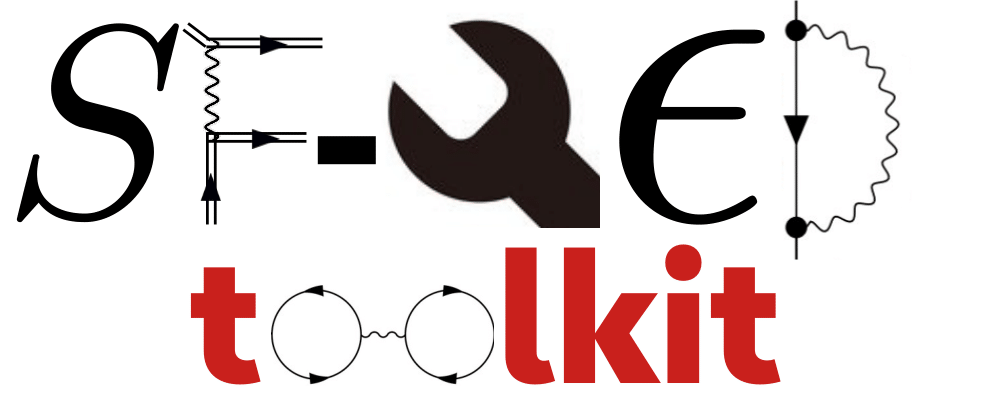SFQEDtoolkit: a high-performance library for the accurate modeling of strong-field QED processes in PIC and Monte Carlo codes
Strong-field QED (SFQED) processes such as high-energy photon emission and electron-positron pair creation are central in determining the dynamics of particles and plasmas in extreme electromagnetic fields such as those present in the vicinity of compact astrophysical objects or generated with ultraintense lasers. SFQEDtoolkit is an open source library designed to allow users for a straightforward implementation of SFQED processes in existing particle-in-cell (PIC) and Monte Carlo codes. SFQEDtoolkit is designed to provide users with high-performance and high-accuracy. Neat examples showing its usage can be found in the folders example.cpp and example_fortran.
In the near future, SFQEDtoolkit will be enriched to model the angular distribution of the generated particles, i.e., beyond the commonly employed collinear emission approximation, as well as to model spin and polarization dependent SFQED processes.
SFQEDtoolkit is a scientific project. If you present and/or publish scientific results that used SFQEDtoolkit, we ask you to set a reference to show your support. At present, this can be achieved by inquiring
or by simply adding
"S. Montefiori, M. Tamburini, Computer Physics Communications 292, 108855 (2023)"
to the references' list of your work. Thank you for your understanding and support!
SFQEDtoolkit is licensed under the GPLv3+.
The steps listed below are meant to help users to successfully include SFQEDtoolkit into their Montecarlo or PIC code. SFQEDtoolkit can be used in both C++ and Fortran codes and the instructions below contain, in between brackets, the programming language to which they refer. Before using SFQEDtoolkit you are strongly recommended to read the "Users manual" included in the appendix A of the above mentioned article, "S. Montefiori, M. Tamburini, arXiv:2301.07684, 2023", where all the main routines are introduced and described.
-
Copy the folders
src_SFQEDtoolkit(required for C++ and Fortran) andsrc_fortran_wrapper(only for Fortran), pasting them to the directory where your main code is located. In addition to this, you need either to copy thecoefficientsfolder (boundled with SFQEDtoolkit), containing the Chebyshev coefficients approximating the core functions used by the library, or, alternatively, to export the environment variableSFQED_TOOLKIT_USERspecifying the path to the directory where thecoefficientsfolder can be found. -
Change your code using the functions made available by the toolkit (see appendix A of arXiv:2301.07684). The library is thought to be used only through the functions that are made available in the
SFQEDtoolkit_Interface.hppheader file (for C++) or in theSFQEDtoolkit_Interface.f90source file (for Fortran). However you are completely free to bypass this "self-imposed restriction" and use the library as you please. Examples of its usage are shown inside theexample_cpp(C++) orexample_fortran(Fortran) folder provided with the library (so please have a look!). -
Compile your code and SFQEDtoolkit together: (C++) -> if you have a
makefilethis is easily done by adjusting it (so to include the content of thesrc_SFQEDtoolkitfolder to your compilation path) and runningmake, otherwise you can always proceed in the old-fashioned way, by compiling and linking everything through the command line; (Fortran) -> same as in the C++ case. Additionally, it is important to compile the content of thesrc_fortran_wrapperdirectory before compiling the files where the library is used. -
To test SFQEDtoolkit, you may apply the instructions above to the examples (
example_cppandexample_fortran) we provided. Actually, when dealing with these examples, you can skip point 2 of this instructions list, as we already took care of it for you. Of course if you want to do some changes you are more than welcome to explore.
Currently the library is in its first stable release.
- Dr. Matteo Tamburini
- Samuele Montefiori
